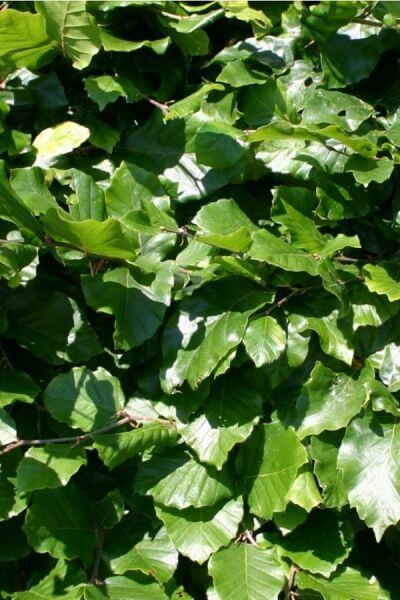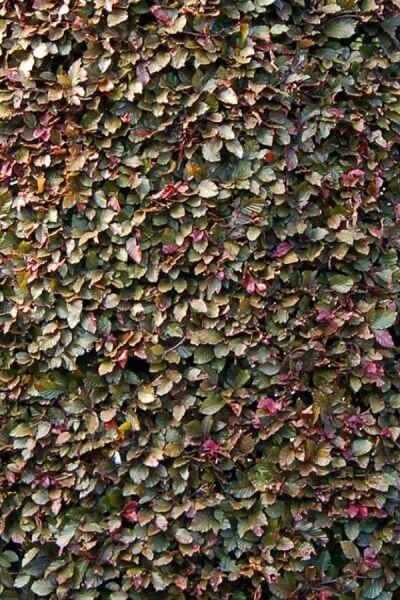Hedging Plants For Large Gardens
Hedging Plants For Large Gardens
Blog Article
Best Hedge Plants For Mixed Borders
Enhance your garden's allure with lush hedge ranges such as Yew (Taxus), Thuja, Laurel, Photinia, and Bamboo, commemorated for their structural stability and environmental advantages.
Yew and Thuja provide evergreen protection and winter durability, while Laurel uses rapid development and broad, aromatic leaves.
Photinia adds seasonal appeal with its lively red foliage, and Bamboo provides a low-maintenance, serene atmosphere.
These hedges enhance air quality, reduce noise, and develop tranquil, private spaces.
Appropriate planting, spacing, and upkeep make sure vigorous development and eco-friendly harmony.
Explore how these rich ranges can raise your garden's beauty and well-being.
Secret Takeaways
Change Your Garden With Lush Hedge Ranges
- Select Yew for its thick, evergreen growth and unrivaled longevity.
- Select Laurel for its quick development and broad leaves, ensuring quick privacy.
- Select Photinia for its dynamic seasonal foliage, which turns a striking dark red.
- Make use of Bamboo for a low-maintenance, winter-hardy hedge with visual appeal.
- Space plants 2-3 per meter and prune regularly for optimal growth and health.
Popular Hedge Plants
When transforming a garden with rich hedge varieties, it's vital to think about popular hedge plants such as Yew, Thuja, Laurel, and Photinia due to their special attributes and advantages.
Yew (Taxus) is extremely respected for its durability and thick, green development, making it a prime option for sustaining landscapes.
Thuja is kept in mind for its evergreen foliage and robust winter season durability.
Photinia adds seasonal vibrancy with red leaves that darken in time, producing vibrant visual appeal.
Laurel provides fast growth and fragrant, broad leaves, ideal for fast personal privacy.
In Addition, Bamboo is an exceptional choice for ambiance, offering a low-maintenance, winter-hardy alternative that boosts the garden's visual with its sophisticated, swaying walking sticks.
These selections cater to a variety of horticultural requirements and preferences.
Benefits of Garden Hedges
Garden hedges use a plethora of advantages, making them a valuable addition to any landscape. These natural barriers are cost-effective to carry out and offer significant wind protection, boosting air blood circulation and adding to sound reduction. The thick foliage of hedges like Thuja and Beech guarantees personal privacy by blocking visibility, developing a remote and peaceful environment.
Hedges likewise play an essential function in microclimate policy, providing a steady environment that fosters plant development and reduces temperature level changes. Their detailed leaf structures filter contaminants, enhancing air quality and contributing to a much healthier garden community.
Additionally, hedges excel in sound reduction, soaking up and deflecting sound waves to lower ambient sound levels. This dual functionality of supplying both visual and acoustic personal privacy enhances the general harmony and aesthetic appeal of any garden.
Planting and Upkeep Tips
For an effective hedge, meticulous preparation of the planting location is vital. Guarantee the soil has correct pH and drainage to support strong root advancement.
Area the plants appropriately for the selected types. Water the hedge frequently during its preliminary development phase, adjusting as required with seasonal changes.
Execute a organized bug control and disease prevention technique, utilizing chemical or organic treatments when required. Frequently examine for aphids, termites, and fungal infections.
Apply mulch to retain wetness and suppress weeds. Seasonal pruning promotes dense development and air blood circulation, important for plant health.
Following these standards will assist you cultivate a dynamic, well-maintained hedge that enhances the charm of your garden.
Spacing and Cutting Standards
Spacing and Cutting Standards
Correct spacing and cutting are vital for cultivating healthy, aesthetically appealing hedges. Adequate spacing guarantees each plant receives adequate nutrients, light, and airflow.
Follow these guidelines for ideal hedge maintenance:
- Spacing: Position hedge plants 2-3 plants per meter to encourage robust growth.
- Pruning Methods: Regular pruning is essential for maintaining desired hedge height and shape. Trim brand-new development in summer season and cut down older wood during winter.
- Seasonal Care: Adjust trimming schedules and methods according to seasonal requirements to make sure plant health.
- Hedge Height: Frequently screen and trim to maintain the wanted hedge height and attain consistent aesthetic appeals.
Complying with these actions will ensure your hedge thrives, enhancing both the appeal and performance of your garden.
Selecting the Right Hedge
Choosing the Right Hedge
Picking the proper hedge involves evaluating elements such as fully grown height, foliage density, and ecological durability. Successful hedge plant selection needs understanding each species' development qualities and site-specific adaptability.
For instance, Yew (Taxus) offers exceptional longevity and thick growth, while Thuja is notable for its winter season resilience. In addition, considering upkeep requirements is essential; fast-growing types like Laurel or Privet demand routine trimming, whereas low-maintenance alternatives like Bamboo or Ivy might be more effective for those seeking very little upkeep.
Ecological factors such as soil type, light accessibility, and wetness conditions ought to likewise guide the choice procedure. This cautious technique ensures the selected hedges will thrive, offering both practical and visual benefits to the garden landscape.
Shipment and Planting Advice
To ensure your hedge plants prosper, they need to be delivered by specialized couriers and planted without delay upon arrival.
Follow these essential steps for effective planting:
- Soil Preparation: Improve the soil with raw material to improve drain and nutrient material.
- Planting Depth: Create a trench twice the width and equal to the depth of the root ball.
- Watering Methods: Water completely after planting, keeping the soil consistently moist but not saturated.
- Mulching: Use a layer of mulch to maintain wetness and suppress weeds.
Customer Support and Service
Provided the vital function of prompt assistance in horticultural pursuits, our customer support team is offered six days a week through telephone, e-mail, and social networks to use skilled suggestions and swiftly address any concerns. Their devotion to quick response times ensures client fulfillment by resolving inquiries connected to plant health, optimum planting methods, and maintenance schedules.

Response Time
Telephone
Email
This thorough support system, reinforced by an outstanding 9.3/ 10 client ranking, highlights our dedication to boosting the gardening experience for every single customer.
Frequently Asked Questions
How Long Does It Take for Hedge Plants to Establish?
Hedge plants typically require one to three years to become fully established, with the exact duration varying by species and growing conditions.
Effective care throughout this critical duration is necessary for robust development. Constant watering, watchful weed control, and suitable fertilizer application are critical in promoting strong root development.
For example, fast-growing types like Laurel might develop faster, while slower-growing varieties such as Yew might take longer. Diligent upkeep speeds up the establishment process, resulting in thick and healthy hedges.
What Are the Best Hedge Plants for Privacy?
The question of the very best hedge plants for personal privacy involves evaluating evergreen and deciduous alternatives.
Evergreen hedges like Thuja, Laurel, and Cypress supply year-round coverage, ensuring continuous privacy.
In contrast, deciduous hedges such as Beech use seasonal personal privacy, shedding leaves in chillier months.
Key upkeep ideas for privacy hedges consist of routine trimming, fertilizing in spring, and correct spacing-- usually 2 to 3 plants per meter.
Furthermore, constant watering and persistent weed removal are vital for promoting healthy, dense growth.
Can Hedge Plants Draw In Wildlife to My Garden?
Yes, hedge plants can attract wildlife to your garden by supplying important advantages like shelter, food, and nesting websites, thereby boosting local biodiversity. For example, yew, holly, and laurel are excellent for bring in birds, while ivy supports a variety of pests.
However, it is very important to note that there are some disadvantages, such as increased upkeep to manage insects and regular upkeep. Thoroughly selecting and keeping hedge varieties can assist balance these benefits and disadvantages, eventually promoting a lively and sustainable community in your garden.
Exist Any Flowering Hedge Plants Available?
Yes, there are flowering hedge plants readily available that can enhance the charm of your garden.
For instance, Elaeagnus, also called Olive Willow, produces fragrant white flowers in the fall, adding a touch of sophistication.
Photinia, another popular choice, showcases vibrant red leaves that develop into an abundant green, creating a dynamic visual result throughout the seasons.
To ensure these plants flourish, it's important to practice correct pruning techniques and seasonal maintenance, such as trimming new development in the summer season and cutting down in the winter.
These measures will help preserve the health and aesthetic appeal of your flowering hedges.
How Do I Avoid Insects in My Hedge Plants?
To avoid bugs in hedge plants, use natural bug control approaches and keep correct hedge care. Present helpful pests like ladybugs, which prey on damaging bugs, to develop a well balanced environment.
Frequently examine your hedges for indications of invasion and without delay get rid of any afflicted parts to prevent the spread. Ensure the health of your hedges by applying balanced fertilizers and supplying appropriate water.
Make use of mulching to keep soil moisture and proper spacing to reduce plant tension and promote robust development. These practices collectively help in minimizing bug concerns and preserving a healthy hedge.
Conclusion
In essence, selecting the right hedge ranges such as Yew, Thuja, and Laurel can change any garden into a peaceful haven. These Additional resources plants supply year-round greenery, improve visual appeal, and deal practical benefits like sound decrease and wind security.
Proper planting techniques, precise spacing, consistent watering, and seasonal trimming are essential for ideal growth.
Reputable delivery services and skilled customer assistance guarantee a seamless experience from purchase to planting, making it easier than ever to elevate your outside area.
Garden hedges offer a multitude of advantages, making them a valuable addition to any landscape. These natural barriers are cost-efficient to implement and supply considerable wind defense, improving air blood circulation and contributing to noise decrease. The dense foliage of hedges like Thuja and Beech makes sure privacy by obstructing presence, creating a remote and serene environment.

Pruning Methods: Regular pruning is essential for keeping wanted hedge height and shape. Trim brand-new development in summer season and cut back older wood during winter.
Report this page